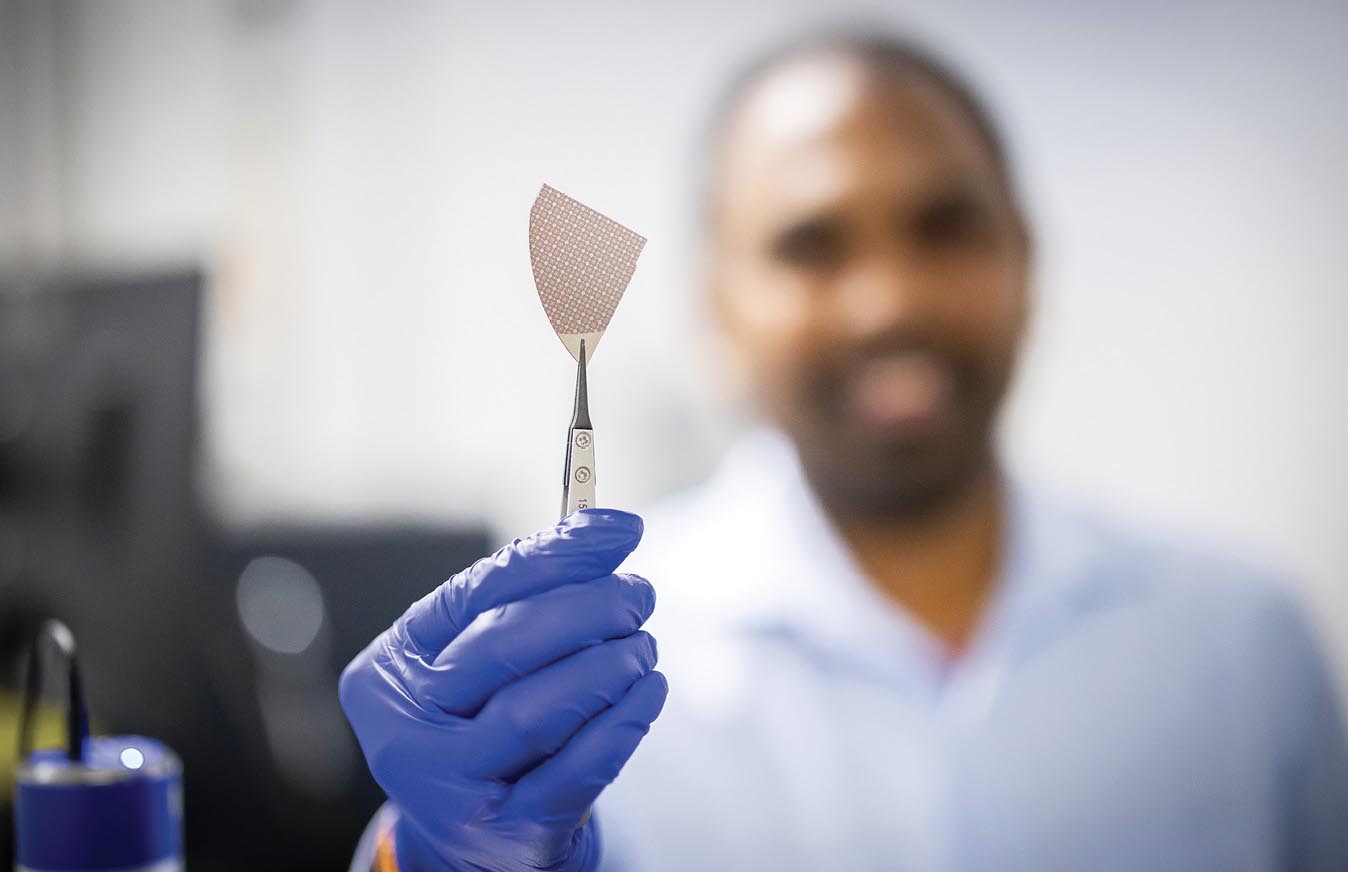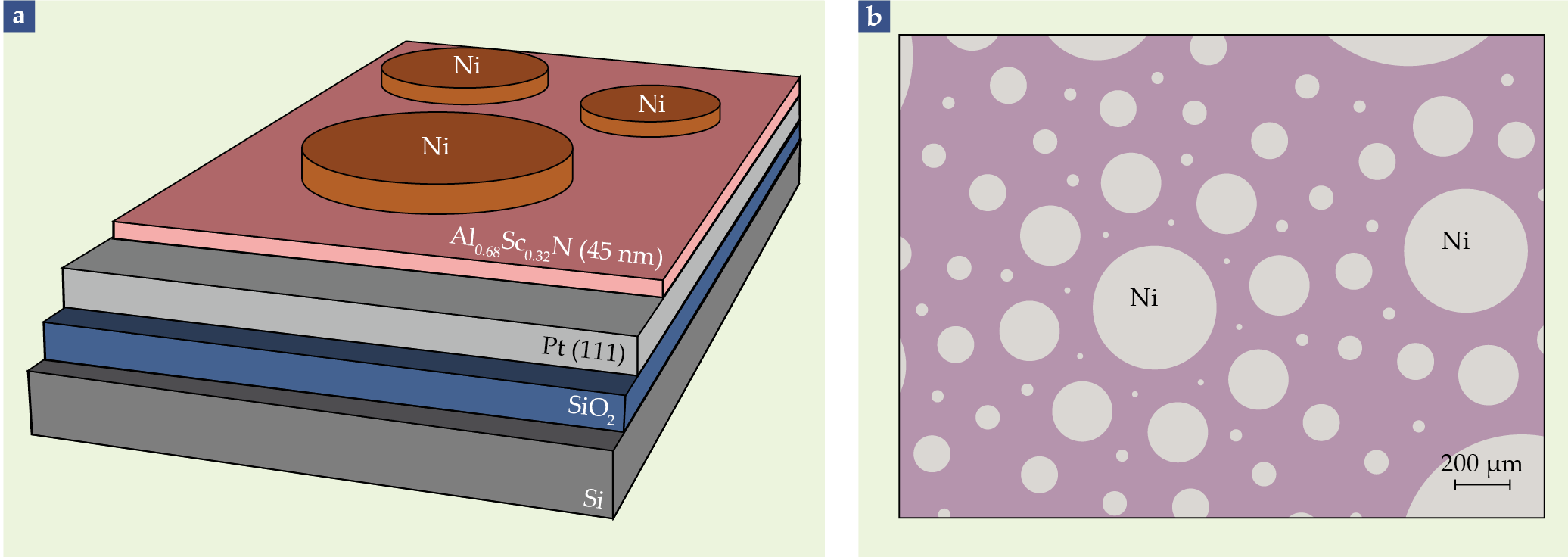New memory circuit can handle the heat
DOI: 10.1063/pt.uqgw.zbat
Silicon-based electronics stop working above 250–300 °C. That’s the temperature at which the number of thermally induced charge carriers in a material exceeds its doping concentration. More generally, nonvolatile memory devices—circuits that can retain stored data even when unpowered—cannot reliably operate above that temperature. The limit puts devices made from CMOS materials out of range of the extreme temperatures found on the surface of Venus, for instance, or inside a jet engine.

Dhiren Pradhan, a materials scientist at the University of Pennsylvania, displays a heat-resistant ferroelectric memory device. (Image from Dhiren Pradhan.)

Fortunately, a few wideband semiconductors, such as silicon carbide, can be the basis for logic transistors that operate effectively at up to 800 °C (see Physics Today, March 2017, page 19
A group of electrical engineers and materials scientists led by Dhiren Pradhan (a postdoc at the University of Pennsylvania) and David Moore (at the Air Force Research Laboratory) has now demonstrated a scalable, high-temperature, nonvolatile memory device that can fill the gap. According to the group’s measurements, the device, which consists of a 45-nm-thick aluminum scandium nitride ferroelectric diode, can reliably operate in temperatures up to 600 °C and quickly switch between stored states for more than 60 hours.

A ferroelectric memory device, in schematic. (a) Aluminum, scandium, and nitrogen were sputtered onto a 150 nm film of platinum and silicon dioxide on a silicon substrate. Nickel-metal electrodes were then photolithographically deposited atop the AlScN. (b) A cross section of the device is shown as it would appear in optical microscopy. (Image adapted from D. K. Pradhan et al., Nat. Electron. 7, 348, 2024.)

Shown schematically in the figure, the device’s circular nickel electrodes are deposited atop the thin ferroelectric layer, which is grown on a 10 cm silicon wafer. Ferroelectric materials exhibit remanent polarization—meaning that when an electric field is applied and then removed, the material remains polarized—which can serve as binary states 0 and 1, the off and on states, respectively, of an electronic memory. The crystal structure of AlScN is advantageous for its strength and durability. The material’s polarization is stable at temperatures as high as 1000 °C, and its surface can be made microscopically smooth and devoid of cracks, pores, and holes. Of the hundreds of devices that the researchers built and tested, only a small fraction were found to be faulty. (D. K. Pradhan et al., Nat. Electron. 7, 348, 2024
